What really helps protect your newborn from SIDS
The exact cause of SIDS is unknown, but you can still take steps to reduce the risk.
Updated on June 28, 2022
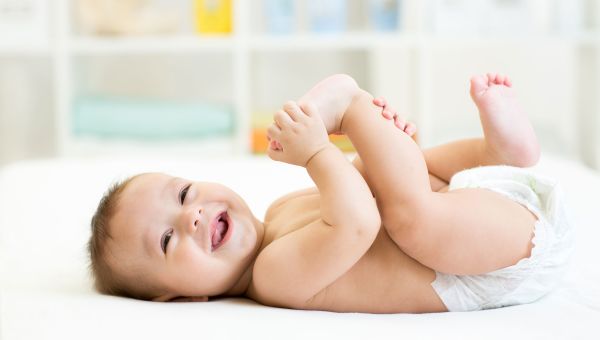
It’s not uncommon to find a parent standing next to their sleeping newborn’s crib in the middle of the night, a hand gently placed over the child’s chest to check on their breathing. Many new parents worry about the possibility of sudden infant death syndrome (SIDS), the unexplained death of a child under 1 year old.
In 2020, there were an estimated 1,389 deaths of… Show More
It’s not uncommon to find a parent standing next to their sleeping newborn’s crib in the middle of the night, a hand gently placed over the child’s chest to check on their breathing. Many new parents worry about the possibility of sudden infant death syndrome (SIDS), the unexplained death of a child under 1 year old.
In 2020, there were an estimated 1,389 deaths of children under age 1 in the United States due to SIDS, according to the Centers for Disease Control and Prevention (CDC). Risk peaks between 1 and 4 months old, and although 90 percent of SIDS deaths occur before 6 months, the possibility is still present throughout the first year. Current research suggests there may be a link between SIDS and abnormalities in areas of the brain that control breathing and heart function, but researchers don’t fully understand why it occurs.
Although SIDS can’t always be prevented, there are steps you can take to reduce your child’s risk. Alison Niebanck, MD, a pediatrician with Memorial Health University Medical Center in Savannah, Georgia, shares what parents can do to prevent SIDS—as well as certain risk factors that are out of our control.
Show Less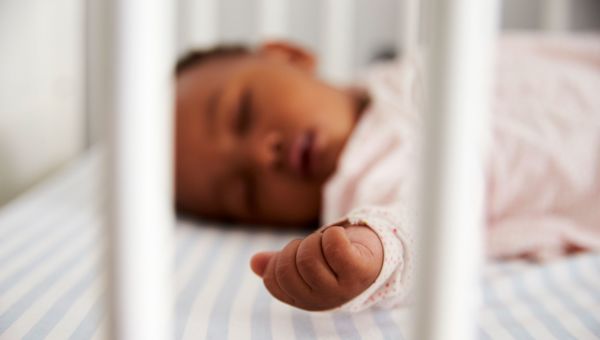
The most effective way to reduce SIDS risk
Creating a safe sleep environment for your infant is the most important thing any parent can do to protect their newborn from SIDS. Babies should always be placed on their back to sleep, never on their stomach or side.
Dr. Niebanck advises her patients to follow the American Academy of Pediatrics (… Show More
Creating a safe sleep environment for your infant is the most important thing any parent can do to protect their newborn from SIDS. Babies should always be placed on their back to sleep, never on their stomach or side.
Dr. Niebanck advises her patients to follow the American Academy of Pediatrics (AAP) safe sleep recommendations: “All babies should be on their back, alone in a crib or bassinet. The mattress should be firm, with no space between the mattress and the crib.” Parents should be sure that mattress sheets are tight-fitting, with no loose bedding surrounding a child, and the sleeping surface should be flat and not on an inclined angle.
Resist the urge to cover your newborn or let them sleep with a cherished toy. “The crib should not have any bumpers, blankets, pillows, or stuffed animals in with the baby,” Niebanck adds. Parents are advised never to use any sleep positioners or wedges in their child’s crib, as well, since it creates the potential for suffocation or entrapment.
The AAP also recommends that children should sleep in the same room as their parents—in their own crib, bassinet, or playpen—for at least the first six months. Room sharing in this way helps protect babies through the first year of life, reducing the risk of SIDS by as much as 50 percent.
If older babies around nine or 10 months old experience sleep disruption by seeing their parents in the room, Niebanck advises parents to speak with a pediatrician about sleep habits and development.
Show Less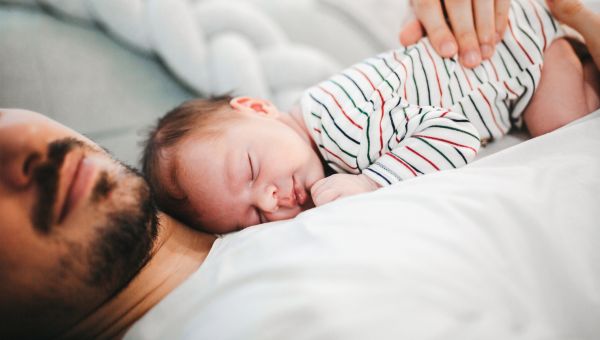
Controversies around co-sleeping
Sharing your adult bed with an infant, known as co-sleeping, is common in many cultures and has increased in popularity in the United States. The CDC reports that approximately 61 percent of parents said that they co-sleep with their little ones.
It's a divisive topic. Many parents swear by bed-… Show More
Sharing your adult bed with an infant, known as co-sleeping, is common in many cultures and has increased in popularity in the United States. The CDC reports that approximately 61 percent of parents said that they co-sleep with their little ones.
It's a divisive topic. Many parents swear by bed-sharing, but the AAP urges parents not to do it under any circumstances. That includes infants sharing beds with children or other caregivers.
“Co-sleeping increases the risk of SIDS anywhere from 5 to 15 times,” says Niebanck. “We know that it is a risky behavior mostly because the parent is asleep, and they think that they may wake up, but the sleep deprivation that occurs when babies are young is a true thing.”
Even with the recommendations against co-sleeping, there are situations where it may occur, such as middle-of-the-night feedings. Tired parents are encouraged to be vigilant during these sessions. The AAP acknowledges that bringing your infant into your bed is less hazardous than sitting on a chair or sofa, especially if there is a chance that a parent will inadvertently fall asleep. Be sure that the area where the baby is being fed is free of blankets, pillows, or any other potential suffocation hazards. Feedings should be positioned on the bed so that a child can’t accidentally roll and become wedged between the bed and the wall. If a parent awakens to find they have fallen asleep with their child in their bed, the newborn should go back to their own crib.
If you do co-sleep, don’t hide it from your pediatrician. Bring it up at your child’s wellness visit so they can assess your infant's risk for SIDS.
Show Less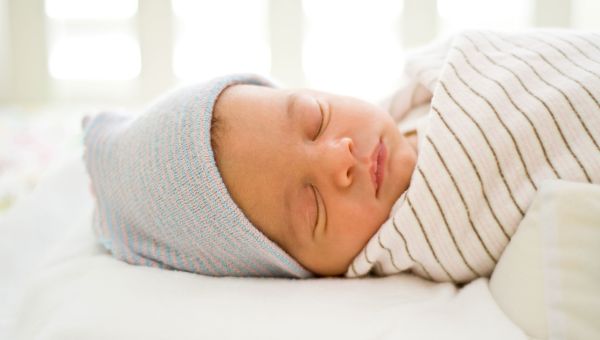
The case against swaddling
Learning how to swaddle your newborn is a mainstay of most parenting classes. Tightly wrapping your infant in a blanket is fine in the hospital, but evidence suggests it may not be as safe as once thought.
A 2020 study published in Child Health Nursing Research found that swaddling can… Show More
Learning how to swaddle your newborn is a mainstay of most parenting classes. Tightly wrapping your infant in a blanket is fine in the hospital, but evidence suggests it may not be as safe as once thought.
A 2020 study published in Child Health Nursing Research found that swaddling can lead to an increased risk of SIDS for several reasons. Swaddled infants were sometimes put to sleep on their side or stomach, despite current recommendations. A newborn in a swaddle can be less likely to wake up from sleep if they are having cardiovascular difficulties.
Achieving a proper swaddle can be surprisingly difficult, especially when you have an active infant. An overly tight swaddle may lead to overheating, a known risk factor for SIDS. On the other hand, a loose swaddle allows for an easy escape, leaving a blanket that could pose a suffocation risk. Plus, as an infant gets older, they will begin to flip to their stomach on their own during sleep. If arms are in a swaddle, babies may not be able to freely adjust their sleep position. If you do choose to swaddle, transition away from the practice around the two-month mark, when your baby begins to move more within the crib.
Niebanck says she prefers sleep sacks or sleepers with feet for newborns. Both allow a child’s arms to be free and prevent any excess fabric from covering the face. To avoid overheating, the AAP recommends that infants be dressed with no more than one layer more than an adult would wear in a certain environment. Caregivers should check babies for signs of overheating, which include sweating or the infant’s chest feeling hot to the touch.
Show Less
Pacifiers May Be Helpful
Another alternative to calm a fussy sleeper is to give them a pacifier. Although the reason why is still somewhat unclear, pacifiers reduce the risks of SIDS. A 2020 study in Paediatrics & Child Health suggests that pacifiers help babies regulate breathing, and the AAP recommends offering… Show More
Another alternative to calm a fussy sleeper is to give them a pacifier. Although the reason why is still somewhat unclear, pacifiers reduce the risks of SIDS. A 2020 study in Paediatrics & Child Health suggests that pacifiers help babies regulate breathing, and the AAP recommends offering pacifiers at nap time and bedtime to reduce SIDS risk. Choose pacifiers without toys, stuffed animals, or clips to clothing attached, and never hang a pacifier around an infant’s neck.
For breastfed infants, caregivers should remember not to start using pacifiers until breastfeeding is firmly established, which involves having an adequate milk supply, an effective and comfortable latch, and appropriate weight gain. Babies who are not being directly breastfed can begin using a pacifier as soon as desired. Check with your pediatrician on when pacifier use can begin.
Show Less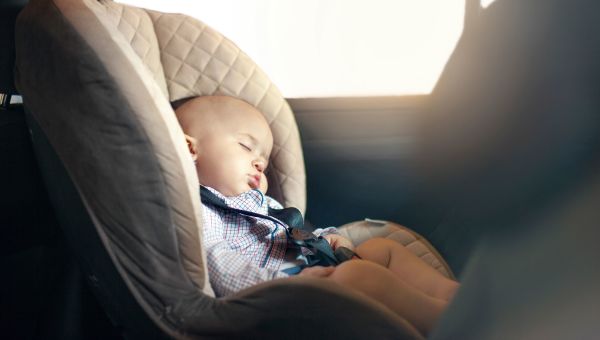
Safe sleep while traveling
A vacation with your newborn should be a fun-filled experience, but there may be difficulties. Established routines are often sacrificed when a family travels to a new location, causing sleep disruptions during naps and bedtime.
To help babies sleep in an unfamiliar environment, parents may resort… Show More
A vacation with your newborn should be a fun-filled experience, but there may be difficulties. Established routines are often sacrificed when a family travels to a new location, causing sleep disruptions during naps and bedtime.
To help babies sleep in an unfamiliar environment, parents may resort to tactics they would not try at home, such as co-sleeping or letting their child rest in their car seat.
“Car seats are great and perfect for the car, but they create an unsafe sleep environment when taken out of the car,” cautions Niebanck.
Sitting up in a car seat for an extended period may cause breathing difficulties, especially in younger infants. Car seats are also not steady when out of the car, posing the risk of tipping over and causing accidental suffocation. Parents may also turn to strollers and baby swings when they are desperate to get their child to sleep, but both also pose a risk for tipping over. Many baby swings are only approved for infants up to three months, creating a suffocation hazard if a baby rolls over within one. A very brief, supervised nap is fine, but a longer snooze should still take place in a crib.
Niebanck also tells traveling parents to make sure they pack their own travel playpen or call the hotel to see if they offer one. Steer clear of renting or using a crib of unknown origin. “You don't know how old the crib is or if it's a drop-side crib, and we do know that drop-side cribs are an increased risk for entrapment and SIDS,” says Niebanck.
Many airlines offer to check these items for free, so reach out to your carrier before flying.
Show Less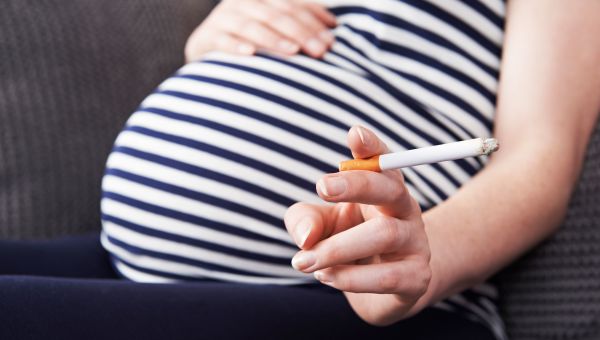
The link between smoking and SIDS
After sleep position, smoking while pregnant and exposure to secondhand smoke after birth are the next largest risk factors for SIDS. The AAP recommends eliminating all tobacco smoke exposure before and after birth, noting that the risk of SIDS is especially high when an infant shares a bed with an… Show More
After sleep position, smoking while pregnant and exposure to secondhand smoke after birth are the next largest risk factors for SIDS. The AAP recommends eliminating all tobacco smoke exposure before and after birth, noting that the risk of SIDS is especially high when an infant shares a bed with an adult smoker, even if the adult does not smoke in bed.
A smoker would ideally quit well before becoming pregnant, but it’s still beneficial to quit at any point during pregnancy rather than continue smoking. One of the best defenses against SIDS is to limit exposure to secondhand smoke prior to pregnancy or immediately after finding out you are pregnant. Expectant parents and other family members should also be encouraged not to resume smoking following the end of a pregnancy. If you discover you’re pregnant, speak with a healthcare provider (HCP) about a smoking cessation plan.
Show Less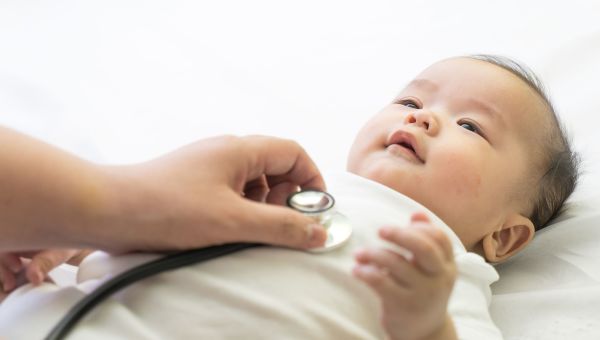
Wellness visits are crucial
Receiving regular medical care is important for expectant parents and their newborn children. Access to prenatal care and wellness visits for infants both decrease the risk of SIDS.
Once your child is born, following guidelines for regularly scheduled pediatrician visits is crucial. “Newborns… Show More
Receiving regular medical care is important for expectant parents and their newborn children. Access to prenatal care and wellness visits for infants both decrease the risk of SIDS.
Once your child is born, following guidelines for regularly scheduled pediatrician visits is crucial. “Newborns should receive a checkup within the first 72 hours or so of leaving the hospital and at one month, two months, four months, six months, nine months, and 12 months,” says Niebanck. “The pediatrician can assess the baby's development and screen for any other possible situations that could contribute to SIDS.”
During every visit, your pediatrician will discuss your child’s sleep patterns and go over suggestions for a safe snoozing environment. It’s also important that infants follow a vaccination schedule during this time. The AAP and CDC agree that childhood vaccines are not linked to SIDS, despite any myths parents may have heard.
Show Less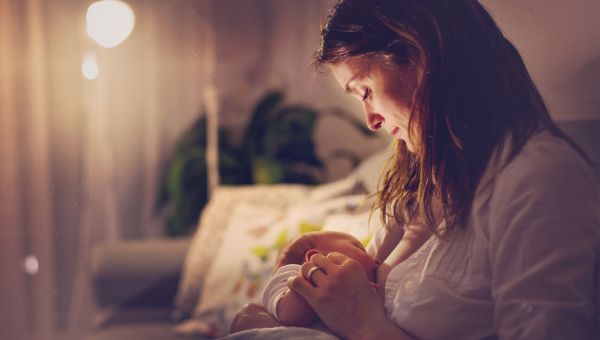
The benefits of breastfeeding and other family health measures
Among the benefits of breastfeeding is that it protects against SIDS. “It decreases the risk of SIDS by about half, although we’re not quite sure what the reasons are behind it,” says Niebanck.
Research has also found that partial breastfeeding, when breast milk is supplemented by some… Show More
Among the benefits of breastfeeding is that it protects against SIDS. “It decreases the risk of SIDS by about half, although we’re not quite sure what the reasons are behind it,” says Niebanck.
Research has also found that partial breastfeeding, when breast milk is supplemented by some formula feedings, can impart those same benefits of SIDS protection. A 2017 study published in Pediatrics found that any amount of breastfeeding for two to four months cut risk of SIDS by nearly 40 percent. Continuing to breastfeed in some capacity for four to six months contributed to a decrease in risk of around 60 percent.
Pregnant people should also refrain from consuming alcohol or using illicit drugs. Drinking alcohol around the time of conception is also associated with a higher risk of SIDS. A 2020 study published in in eClinicalMedicine found that women who drank alcohol and smoked during pregnancy had a 12-fold higher risk for SIDS compared to women who did neither or stopped within the first trimester.
If you or your partner consume alcohol after your child is born, do not attempt to share a bed with your baby—the combination could be especially dangerous.
Show Less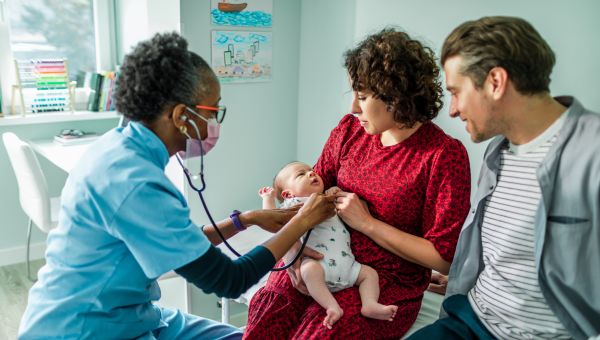
Some Factors Are Outside Your Control
“About 95 percent of SIDS cases can have some preventable risk factors, but there is a subset of crib death for which we do not have an answer,” says Niebanck. “Presumably there may be a genetic component, but the research has not been able to exactly determine what those issues are.”
A study… Show More
“About 95 percent of SIDS cases can have some preventable risk factors, but there is a subset of crib death for which we do not have an answer,” says Niebanck. “Presumably there may be a genetic component, but the research has not been able to exactly determine what those issues are.”
A study published in 2022 in the journal eBioMedicine suggests that some cases of SIDS may be linked to a problem in the part of the brain involved in the regulation of attention, breathing, and arousal from sleep. More research is needed to confirm such a link.
Among other risk factors that can’t be controlled are preterm birth or a low birth weight. Children born to mothers who are under 20 years old also carry an increased risk, although Niebanck says that experts do not know if it is related to age, lack of access to HCPs for younger mothers, or the increased likelihood of preterm birth.
Race and ethnic origin may also be a factor. African American and American Indian/Alaska Native infants have a higher risk for SIDS than do white, Hispanic, or Asian/Pacific Islander American infants. According to the AAP, these racial and ethnic disparities may have a variety of contributing factors, including low socioeconomic status and housing instability.
Show Less
Don’t be fooled by at-home monitors
Parents may be persuaded to buy a home cardiorespiratory monitor that measures an infant’s breathing. Just know that these devices should never be viewed as a SIDS prevention technique.
“There are a lot of options on the market but there has been no data to show that they prevent episodes of SIDS,”… Show More
Parents may be persuaded to buy a home cardiorespiratory monitor that measures an infant’s breathing. Just know that these devices should never be viewed as a SIDS prevention technique.
“There are a lot of options on the market but there has been no data to show that they prevent episodes of SIDS,” cautions Niebanck. According to the AAP, there is concern that these breathing monitors can lead to complacency in parents and lower adherence to known safe sleep guidelines. On the opposite end of the spectrum, they could also lead to unnecessary anxiety about a newborn’s health.
SIDS is scary and may be constantly on your mind if you have a newborn. To allay those fears, continue to make healthy choices for your family, schedule visits with your pediatrician regularly, and most of all, create the safest sleep environment possible for your child.
“The most powerful thing that you can do for a child is having the baby sleep alone and on their back in a crib with nothing else around them,” stresses Niebanck. “Those are the things that will make the most difference.”
Show Less
Moon RY, Carlin RF, Hand I, et al. Sleep-Related Infant Deaths: Updated 2022 Recommendations for Reducing Infant Deaths in the Sleep Environment [published online ahead of print, 2022 Jun 21]. Pediatrics. 2022;e2022057990.
HealthyChildren.org. How to Keep Your Sleeping Baby Safe: AAP Policy Explained. Last Updated June 21, 2022.
Centers for Disease Control and Prevention. Sudden Unexpected Infant Death and Sudden Infant Death Syndrome. Last reviewed: April 28, 2021.
Centers for Disease Control and Prevention. Safe Sleep for Babies. Last reviewed in 2018.
American Academy of Pediatrics. Tips for Keeping Infants Safe During Sleep From the American Academy of Pediatrics. 2020.
Eunice Kennedy Shriver National Institute of Child Health and Human Development. Fast Facts About SIDS. Accessed June 28, 2022.
Eunice Kennedy Shriver National Institute of Child Health and Human Development. How many infants die from SIDS or are at risk for SIDS? Last Reviewed Date January 31, 2017.
Ahn YM, Yang KM, Ha HI, Cho JA. Risk Factors for Sudden Infant Death Syndrome and Sleeping Practices in Korea. Child Health Nurs Res. 2020 Jan;26(1):82-89.
Smith RW, Colpitts M. Pacifiers and the reduced risk of sudden infant death syndrome. Paediatr Child Health. 2020 Jun;25(4):205-206.
Anderson TM, Lavista Ferres JM, Ren SY, et al. Maternal Smoking Before and During Pregnancy and the Risk of Sudden Unexpected Infant Death. Pediatrics. 2019 Apr;143(4):e20183325.
Centers for Disease Control and Prevention. Sudden Infant Death Syndrome (SIDS) and Vaccines. Last reviewed: August 14, 2020.
Thompson JMD, Tanabe K, Moon RY, et al. Duration of Breastfeeding and Risk of SIDS: An Individual Participant Data Meta-analysis. Pediatrics. 2017 Nov;140(5):e20171324.
Elliot AJ, Kinney HC, Hayes HL.EClinicalMedicine. Concurrent prenatal drinking and smoking increases risk for SIDS: Safe Passage Study report. 2020. 19: 100247.
Harrington CT, Hafid NA, Waters KA. Butyrylcholinesterase is a potential biomarker for Sudden Infant Death Syndrome. EBioMedicine. 2022;80:104041.
More On


video

article
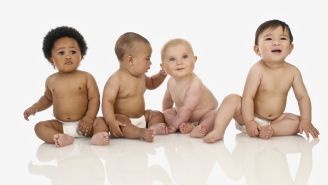
slideshow


video


video
